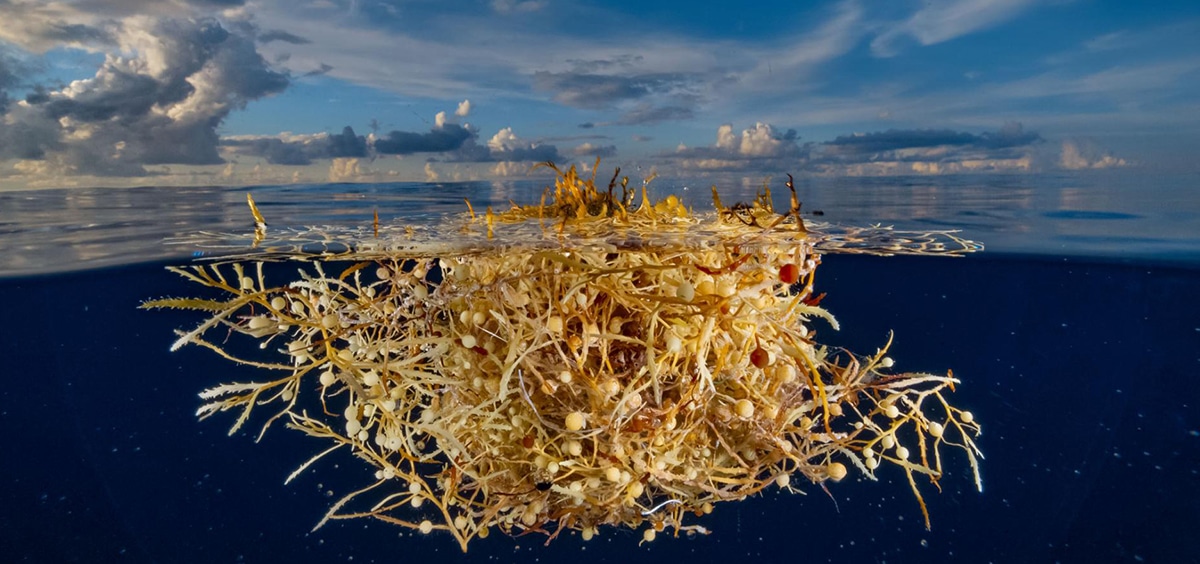
That's right, the Sargasso Sea is the only sea that has no coastIts waters do not bathe the coast of any continental country. Did you know? Surely you have heard or read it out there, but do you really know where is it o what characteristics does it have or just why is it called that way?
Today, our article is about the Sargasso Sea, a sea full of algae that also it is the only sea that is defined by physical and biological characteristics.
The Sargasso Sea
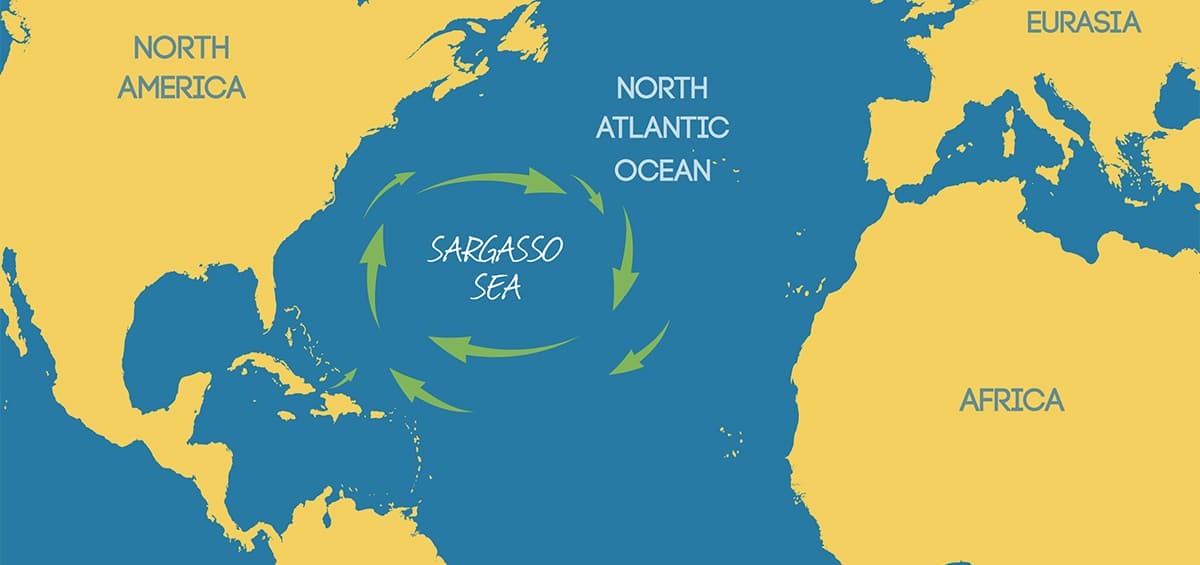
First of all, where is it located? It is an area of the North Atlantic Ocean, quite large, of elliptical shape. It is located between meridians 70º and 40º and parallels 25º to 35ºN, in the northern part of the North Atlantic.
West of the Sargasso Sea runs the Gulf Stream, to the south the South Equatorial Current and to the east the Canary current and comprises a total of 5.2 million square kilometerss, 3.200 kilometers long and just over 1.100 kilometers wide. Something like two-thirds of the ocean, which is not little, or one third of the surface of the United States.
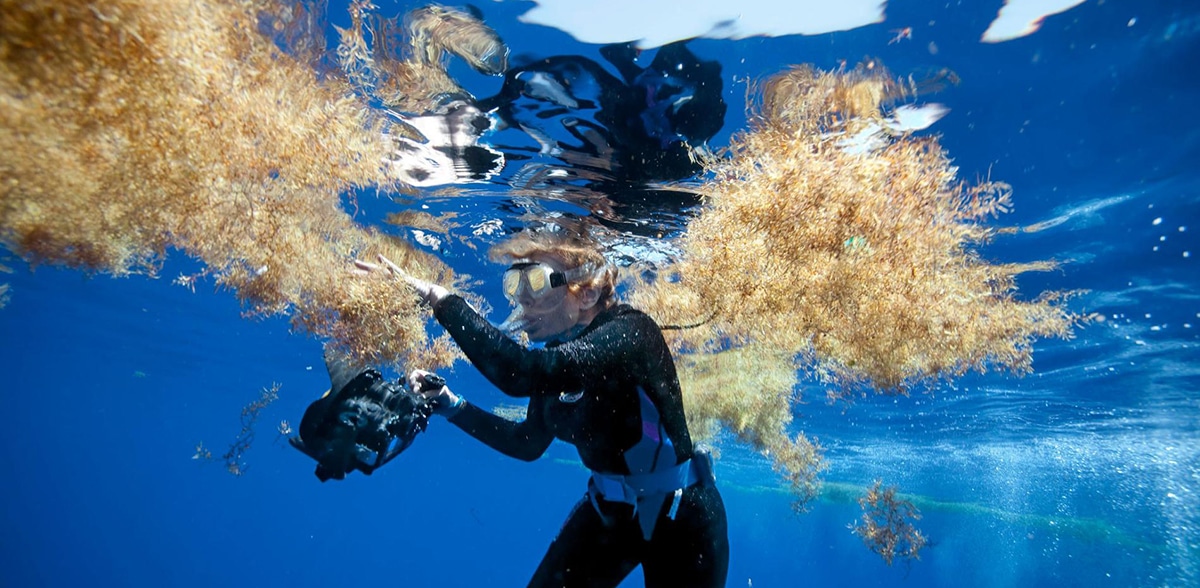
We said in the title of the article that it is the only sea that does not have continental coasts since the only land masses that decorate your space are the Bermuda islands. In fact, it is here where the famous Bermuda Triangle is located, for some a sector of the sea itself, for others the entire sea.
A curious fact is that It was discovered during Christopher Columbus's first trip to America in the XNUMXth century, and in fact, he himself refers to the particular characteristic of this sea that in the end ended up giving it its name: some striking "Green herbs" that were abundant in the waters and still are. In reality, it is not an herb but an algae, of the genus of macroalgae known as sagarsum, sargassum.

The warm temperatures of the water in this sea have created the best place for the algae to reproduce and, due to the currents that in a certain way enclose the sea, the algae have remained inside, in the very center, often assuming real danger to boaters. It is that sometimes there are real "herds" of these algae.!
The name was given by the Portuguese navigators, they baptized both the seaweed and the sea. At that time these adventurers thought that it was the dense algae that sometimes slowed down sailing vessels, but today it is known that the true cause was and is the Gulf Stream.
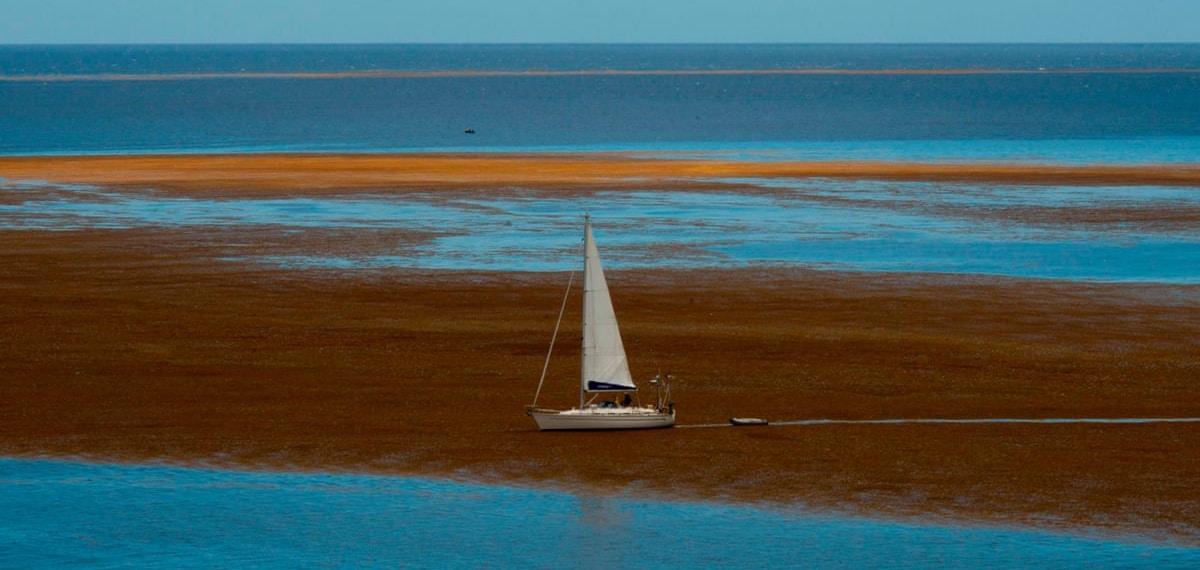
What physical characteristics does the Sargasso Sea have? First no sea winds or currents And in second place algae and plankton abound. We have already said that algae form true forests that can occupy the entire visible surface of the waters, which added to the absence of windsIt can be exasperating for those who sail. There are currents on the sides, around, but they intersect tangentially causing the waters inside to move in concentric circles in a clockwise direction.
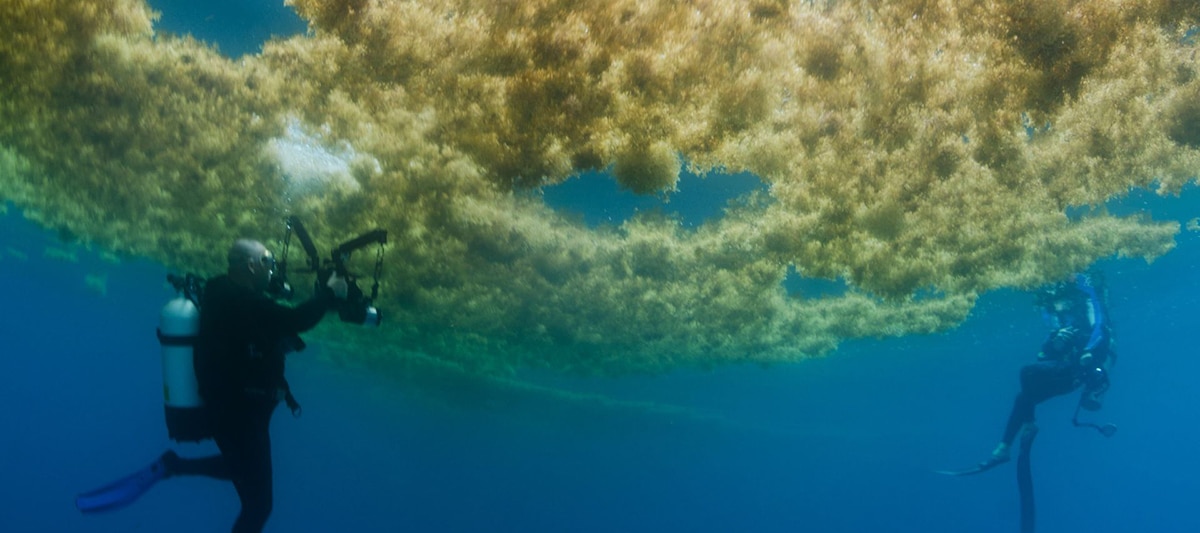
The center of these circles has no apparent movement and is super calm. The famous "chicha calm" so feared by the sailors of yesteryear. The surrounding currents are of more or less warm waters and move over deeper, dense and colder waters.
This situation, water with different densities, is what makes the plankton consuming nitrates and phosphates reign on the surface of the water, where the sun arrives. but at the same time, it makes sure that these waters do not mix with the colder water that runs below and cannot replace the salts that they lose.
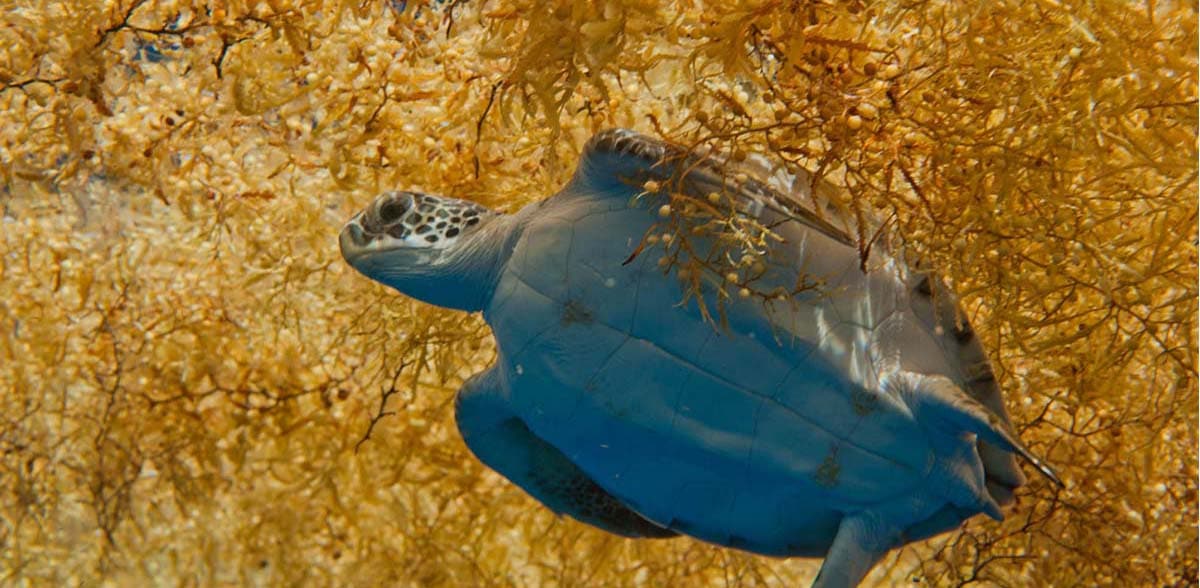
From here that there is hardly any animal life in the Sargasso Sea. There are 10 endemic species of algae, such as the Latreutes shrimp, the sargassensis anemone, the Lithiopa snail or the planes minutus crab. We cannot fail to mention that the area is very important for a couple of eel species that spawn here, for some humpback whales or turtles. In a nutshell it is a spawning, migration and feeding area.
On the other hand it doesn't rain much either, so there is more evaporation than water arrival. In short it is a sea of high salinity and very few nutrients. It would be the equivalent of a desert in the sea. It has variable limits and the same happens with its depth, which has registered about 150 meters in certain areas but reaches 7 thousand in others.
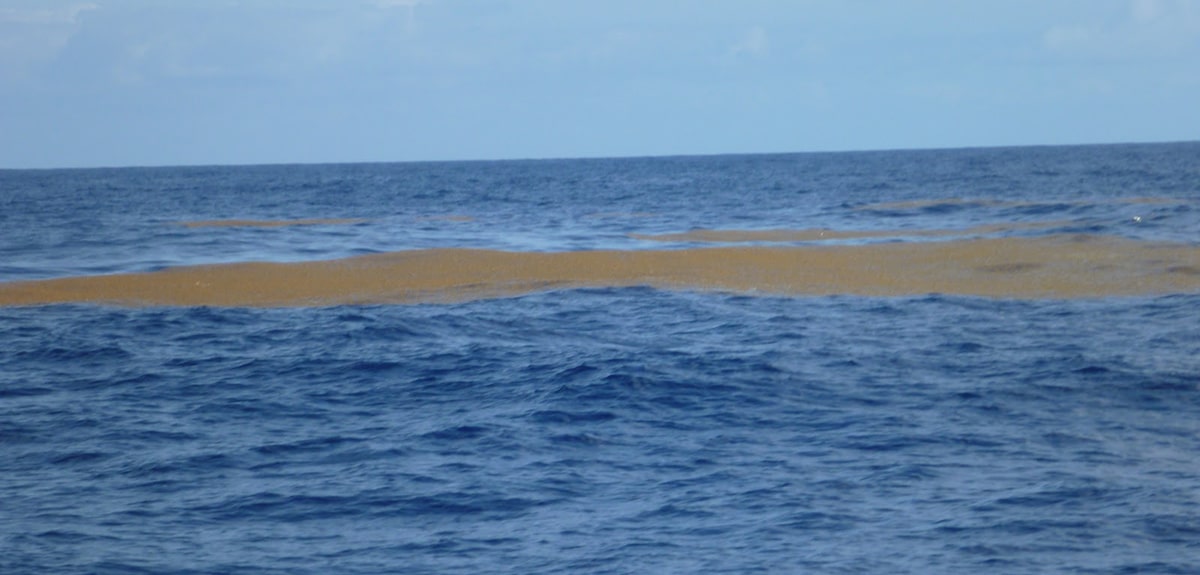
But how could such a sea have been formed in the middle of the Atlantic Ocean? SIt was formed by geological processes that took place on the crust of an ocean that no longer exists, the Tethys. Remember the supercontent Pangea? Well, a crack in it, located between the current continents of Africa and North America, formed a space into which the water of the Tethys was found, forming part of the current North Atlantic Ocean. This ran more than 100 million years ago.
Later, when Gondwana fractured in the Middle Cretaceous times, the South Atlantic was born. During the Cenozoic Era the ocean expanded its borders and the islands that are everywhere are of the intense volcanic activity that characterized terrestrial life.
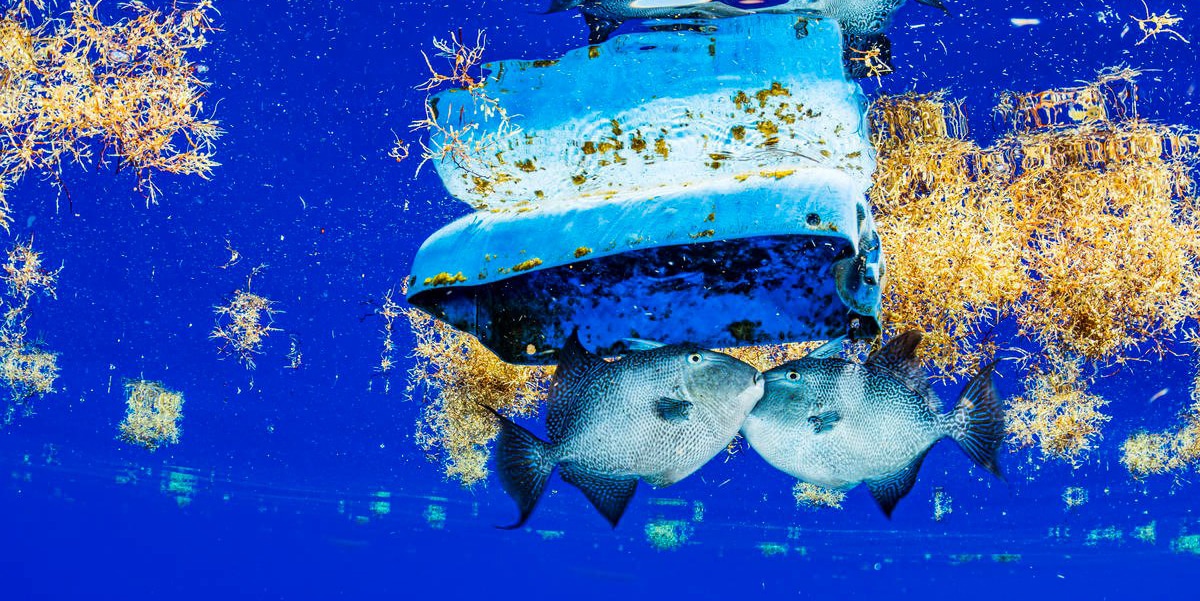
Finally, Is there something that threatens the Sargasso Sea? The man, perhaps? You got it right! Our economic development model based on the constant production of goods and consumption produces trash and it is the garbage, precisely, that threatens the sea. Pollution by chemicals, plastic garbage and even the simple sailing of boats greatly disturbs the ecosystem of the Sargasso Sea. Even being away from the continental coasts.
Luckily in 2014 the Hamilton Declaration was signed between the United Kingdom, Monaco, the United States, the Azores Islands and Bermuda to protect it, but… it remains to be seen if it is actually done.